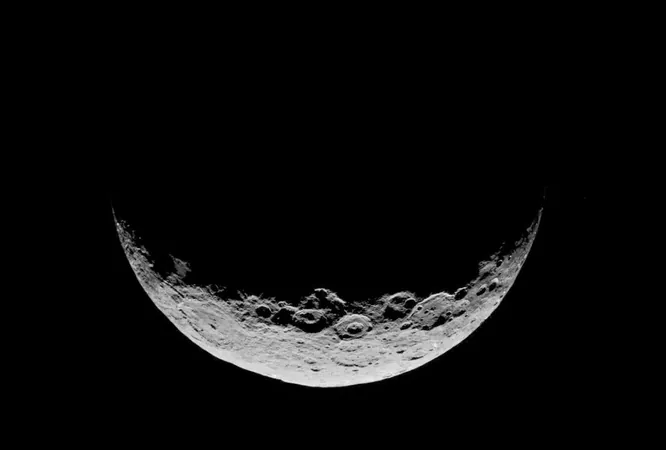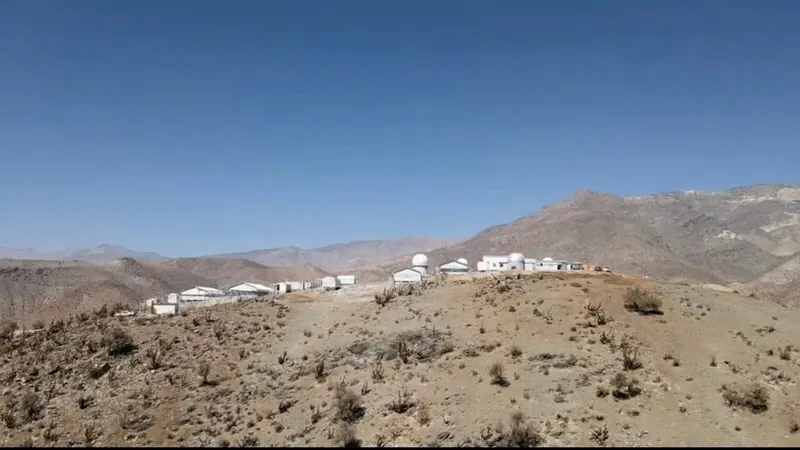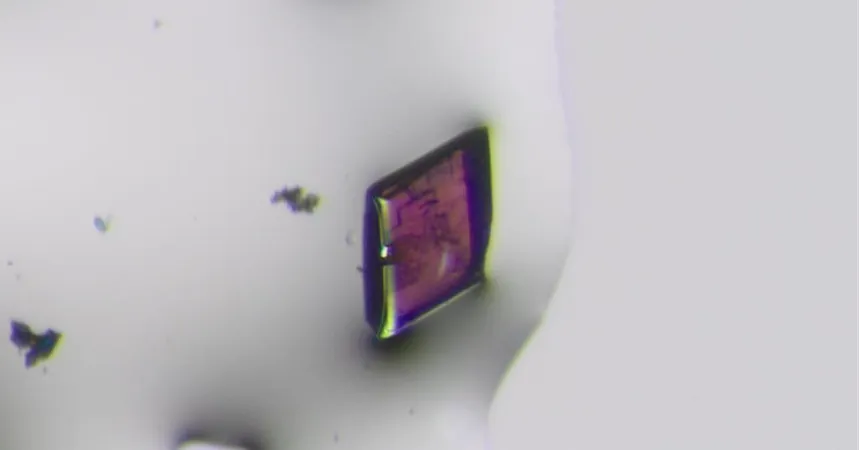
Unraveling the Mysteries of Ceres: Could This Dwarf Planet Hold Secrets to Life?
2025-05-25
Author: Emma
Ceres: The Cosmic Enigma
Ever wondered how planets form and evolve to sustain life? The answer might lie in our solar system's forgotten realms, like asteroids and dwarf planets, particularly Ceres—a world often overshadowed by giants like Pluto. Ceres, nestled in the asteroid belt between Mars and Jupiter, is a unique hybrid, sparking curiosity among scientists about its potential to hold the key to life's origins.
New Findings on Space Collisions
A groundbreaking study published in *Nature Communications* reveals that collisions among small rocky bodies may lose crucial carbon—an essential ingredient for life—as they explode into space. Traditionally, scientists believe that planets gradually grew larger through collisions, where lost material eventually allowed for the planet's development. Ceres, being more gravitationally robust than typical asteroids, may retain more carbon than its smaller counterparts, making it a prime candidate for exploration.
The Call for a Sample Return Mission
Lead researcher Kosuke Kurosawa, affiliated with Kobe University and Chiba Institute of Technology, emphasizes the need for a sample return mission to Ceres. "We need to analyze these samples meticulously back on Earth to uncover their secrets," he stated unequivocally.
Understanding Cosmic Collisions: Shock Metamorphism
The study explores "shock metamorphism," a process that occurs when space rocks collide. Interestingly, it appears that slower impacts leave behind more carbon than high-speed collisions—a phenomena that had puzzled scientists for years. Could it be that carbon's existence is tied to gentler cosmic encounters?
Decoding Carbon’s Mystery
Kurosawa’s team is revisiting earlier research that tied water presence in meteorites to similar collisions, contemplating whether carbon operates under the same rules. Their innovative approach involved firing pellets at samples to observe gas emissions, leading to startling revelations: collisions produced significant amounts of carbon monoxide and carbon dioxide, the result of explosive chemical reactions.
Ceres vs. Ryugu: A Comparative Look
Unlike the unshocked Ryugu samples returned by Japan’s Hayabusa2 mission, Ceres retains a different kind of material due to its gravity, which could enhance our understanding of carbon levels and impacts over time.
NASA's Plans Hang in the Balance
There’s excitement for a Ceres sample mission on the horizon, especially after findings suggesting an ocean may lurk beneath its surface—a tantalizing hint at life's possibilities. However, excitement is tempered by budget concerns. The National Academies Planetary Science Decadal Survey has advocated for this mission, but with NASA's budget facing significant cuts, its future is uncertain.
Looking Forward: Ceres’ Youngest Region
If funding allows, the targeted area for this mission is Occator Crater, believed to harbor the youngest geological features on Ceres. Yet, questions remain: will carbon-rich shock material be present there? Julie Castillo-Rodriguez from NASA’s Jet Propulsion Laboratory hopes to collaborate with Kurosawa's team to further understand Ceres’ potential.
The Implications of Ceres
Ceres could be more than just another celestial body; it may house vital clues about the origins of life in our universe. As scientists aim to unlock its secrets, one thing is clear: Ceres stands at the forefront of cosmic exploration, beckoning us to dive deeper into the mysteries of our solar system.









 Brasil (PT)
Brasil (PT)
 Canada (EN)
Canada (EN)
 Chile (ES)
Chile (ES)
 Česko (CS)
Česko (CS)
 대한민국 (KO)
대한민국 (KO)
 España (ES)
España (ES)
 France (FR)
France (FR)
 Hong Kong (EN)
Hong Kong (EN)
 Italia (IT)
Italia (IT)
 日本 (JA)
日本 (JA)
 Magyarország (HU)
Magyarország (HU)
 Norge (NO)
Norge (NO)
 Polska (PL)
Polska (PL)
 Schweiz (DE)
Schweiz (DE)
 Singapore (EN)
Singapore (EN)
 Sverige (SV)
Sverige (SV)
 Suomi (FI)
Suomi (FI)
 Türkiye (TR)
Türkiye (TR)
 الإمارات العربية المتحدة (AR)
الإمارات العربية المتحدة (AR)